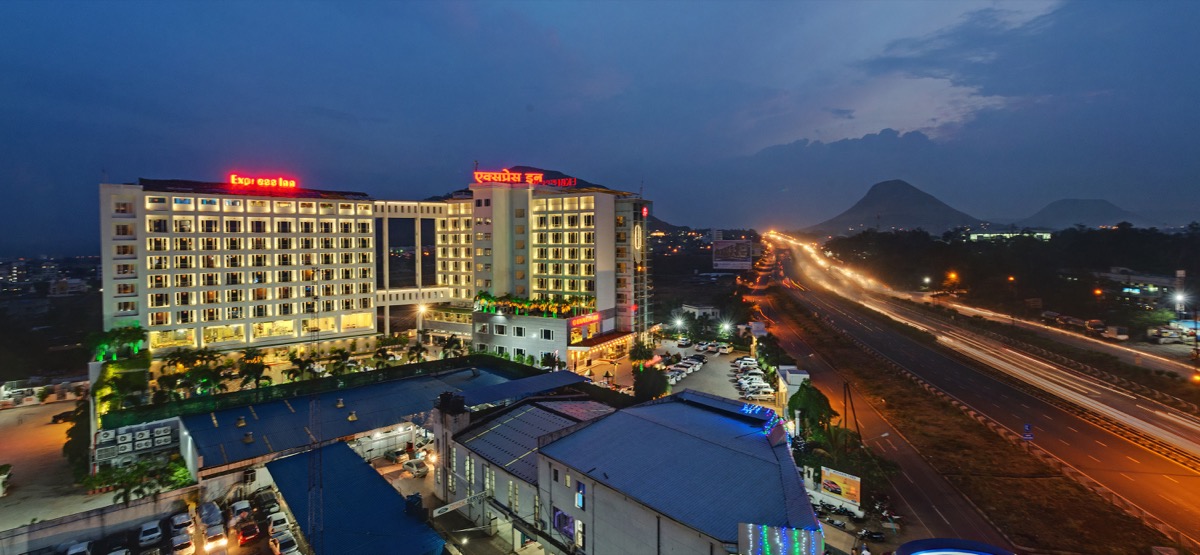
Express Inn is a textbook example of how state of the art technology combines with modern architectural principles to create a sustainable and energy efficient structure. The hotel’s design combined with its strategic location has rendered it the most popular and sought after destination for not only the regular business traveler but also for families on outings and functions.
This premium business hotel is ideally situated on the NH3 Mumbai – Agra Highway just off the Ambad Industrial Estate. The overwhelming response to the first phase of the hotel, led to an adjoining recently completed second phase. The client purchased an adjoining property to create Phase 2, which is now connected to Phase 1 via a sky walk.
Approximately 100 rooms including 6 suites, 17 deluxe rooms, 17 executive rooms,4 family rooms and 51 standard rooms comprise in Phase 1. Each room has been designed simply but with a contemporary elegance giving one a feeling of security and comfort with all one needs on hand. The fine dining restaurants and banquet halls create a superlative ambience. While the second building expands the number of rooms, it also incorporates upgraded amenities such as health club, temperature controlled outdoor swimming pool, banquet halls, multipurpose hall, conference rooms as well as a landscaped podium.
















